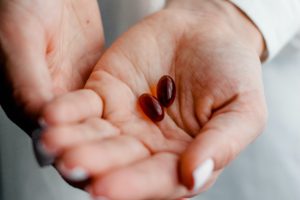
The Best Way to Understand PTSD
Post-traumatic stress disorder (PTSD) is a mental and behavioral disorder that can develop because of exposure to a traumatic event. These events include things such as sexual assault, warfare, traffic collisions, child abuse, domestic violence or other threats on a person’s life. Symptoms may include disturbing thoughts, feelings, or dreams related to the events. This is the best way to understand PTSD — post traumatic stress disorder.
—
Other symptoms include mental or physical distress to trauma-related cues and attempts to avoid trauma-related cues. There are also alterations in the way a person thinks and feels, and an increase in the fight-or-flight response. These symptoms last for more than a month after the event. Young children are less likely to show distress, but instead may express their memories through play. A person with PTSD is at a higher risk of suicide and intentional self-harm.
—
Most people who experience traumatic events do not develop PTSD. People who experience interpersonal violence are more likely to suffer trauma. Events such as rape, other sexual assaults, being kidnapped, stalking, physical abuse by an intimate partner, and incest or other forms of childhood sexual abuse are more likely to develop PTSD than those who experience non-assault based trauma, such as accidents and natural disasters.
—
Prevention may be possible when counselling is targeted at those with early symptoms but is not effective when provided to all trauma-exposed individuals whether or not symptoms are present. The main treatments for people with PTSD are counselling (psychotherapy) and medication. Antidepressants of the SSRI or SNRI type are the first-line medications used for PTSD and are moderately beneficial for about half of people. Benefits from medication are less than those seen with counselling. It is not known whether using medications and counselling together has greater benefit than either method separately. Medications, other than some SSRIs or SNRIs, do not have enough evidence to support their use and, in the case of benzodiazepines, may worsen outcomes.
—
In the United States, about 3% of adults have PTSD in a given year, and 7% of people develop it at some point in their life. In much of the rest of the world, rates during a given year are between 0.2% and 0.8%. Higher rates may occur in regions of armed conflict. It is more common in women than men.
—
Symptoms of trauma-related mental disorders have been documented since at least the time of the ancient Greeks. During the world wars, the condition was known under various terms including “shell shock” and “combat neurosis”. The term “post-traumatic stress disorder” came into use in the 1970s in large part due to the diagnoses of U.S. military veterans of the Vietnam War. It was officially recognized by the American Psychiatric Association in 1980 in the third edition of the Diagnostic and Statistical Manual of Mental Disorders (DSM-III).
Symptoms
Symptoms of PTSD generally begin within the first three months after the inciting traumatic event. They may not even begin until many years later. In the typical case, the individual with PTSD persistently avoids either trauma-related thoughts and emotions or discussion of the traumatic event. They may even have amnesia of the event. However, the event is commonly relived by the individual through intrusive, recurrent recollections, dissociative episodes of reliving the trauma (“flashbacks”), and nightmares (50 to 70%).
—
While it is common to have symptoms after any traumatic event, these must persist to a sufficient degree (i.e., causing dysfunction in life or clinical levels of distress) for longer than one month after the trauma to be classified as PTSD (clinically significant dysfunction or distress for less than one month after the trauma may be acute stress disorder). Some following a traumatic event experience post-traumatic growth.
—
Trauma survivors often develop depression, anxiety disorders, and mood disorders in addition to PTSD. Substance use disorder, such as alcohol use disorder, commonly co-occur with PTSD. Recovery from post-traumatic stress disorder or other anxiety disorders may be hindered, or the condition worsened, when substance use disorders are comorbid with PTSD. Resolving these problems can bring about improvement in an individual’s mental health status and anxiety levels. In children and adolescents, there is a strong association between emotional regulation difficulties (e.g. mood swings, anger outbursts, temper tantrums) and post-traumatic stress symptoms, independent of age, gender, or type of trauma.
Risk Factors
Persons considered at risk include combat military personnel, victims of natural disasters, concentration camp survivors, and victims of violent crime. Persons employed in occupations that expose them to violence (such as soldiers) or disasters (such as emergency service workers) are also at risk. Other occupations that are at higher risk include police officers, firefighters, ambulance personnel, health care professionals, train drivers, divers, journalists, and sailors, in addition to people who work at banks, post offices or in stores.
Therapy
CBT (cognitive behavioral therapy) seeks to change the way a person feels and acts by changing the patterns of thinking or behavior. It can even be used to help change both patterns responsible for negative emotions. Results from a 2018 systematic review found high strength of evidence that supports CBT-exposure therapy. The therapy was efficacious for a reduction in PTSD and depression symptoms, as well as the loss of PTSD diagnosis. CBT has been proven to be an effective treatment for PTSD. It is also currently considered the standard of care for PTSD by the United States Department of Defense.
—
In CBT, individuals learn to identify thoughts that make them feel afraid or upset and replace them with less distressing thoughts. The goal is to understand how certain thoughts about events cause PTSD-related stress. The provision of CBT in an Internet-based format has also been studied in a 2018 Cochrane review. This review did find similar beneficial effects for Internet-based settings as in face-to-face but the quality of the evidence was low due to the small number of trials reviewed.
—
The Best Way to Understand PTSD
—
- Substance abuse is often comorbid with PTSD, where drugs are used to help cope with symptoms.
2. Depression is often comorbid with PTSD, making sufferers prone to depressive symptoms and symptoms worsened by preexisting depression.
3. Other anxiety disorders are comorbid with PTSD, which makes people more prone to PTSD.
4. Medications are often less successful than therapy in treating PTSD overall, including exposure therapy.
5. Women are far more likely to suffer from PTSD because of their propensity for victimization in civilian life.
—
6. Post traumatic stress can lead to violence and rage that can leave others with the disorder.
7. Men are more likely to suffer PTSD from war and other acts related to extreme circumstances.
8. Borderline personality disorder can often cooccur with and cause PTSD and be caused by it, especially during childhood (by childhood trauma).
9. PTSD can be self-imposed if a person is constantly putting themselves at risk for trauma, causing revictimization.
10. PTSD is one of the leading causes of death and suicide by a mental illness, especially among rape victims and war veterans.
—
Final Thoughts: The Best Way to Understand Post Traumatic Stress Disorder
PTSD or Post Traumatic Stress Disorder is a serious disorder that should warrant concern and understanding. It is not something to take lightly or stigmatize. If you or someone else you know has been through a traumatic experience or is showing signs and symptoms, offer help. Don’t allow it to become too late.





Recent Comments